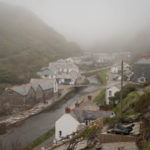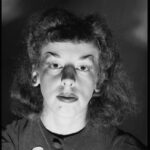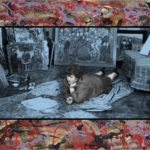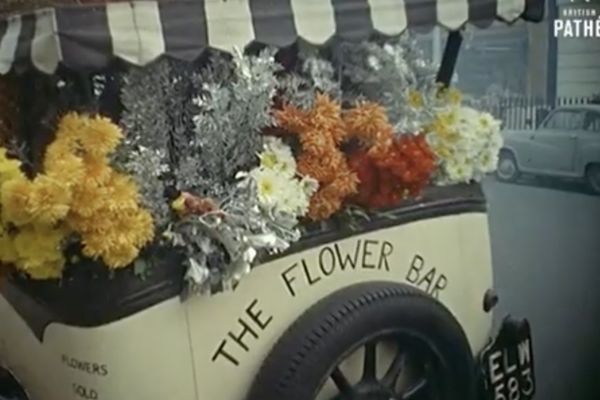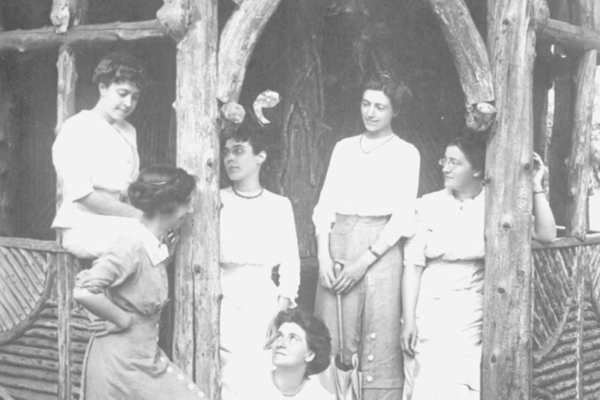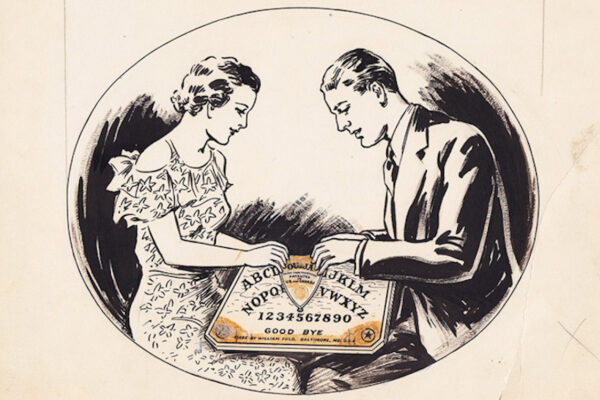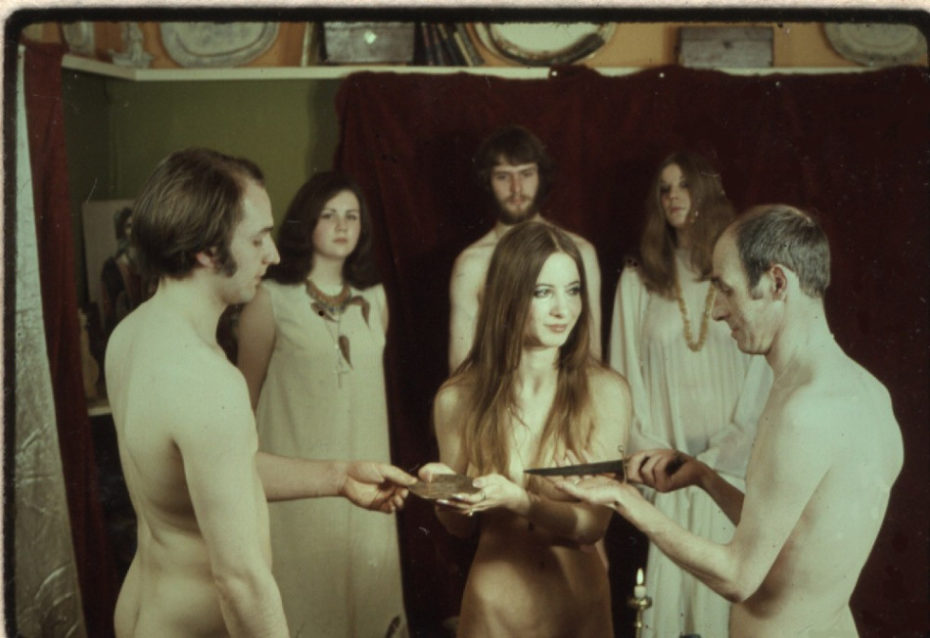
We finally know what we want to be when we grow up. A forest dwelling, diadem wearing witch à la Patricia Crowther, Maxine Sanders, or Doreen Valiente. Never heard of them? Neither had we, until a trip to the Museum of Witchcraft & Magic gave us a crash course in “the Craft.” These magical practitioners – be they witches or Wiccans; occultists or Neopagans – all share a deep commitment to the natural world, community, love, and the power of ornamentation (explains why the outfits are so damn good). And the more we think about it, the more we ask ourselves – are witches the original bohemians? The true hippies? The OG trendsetters for standing out from the crowd? Which is why we’re putting our cauldron on the back-burner today to learn the ins-and-outs of modern day witchcraft…
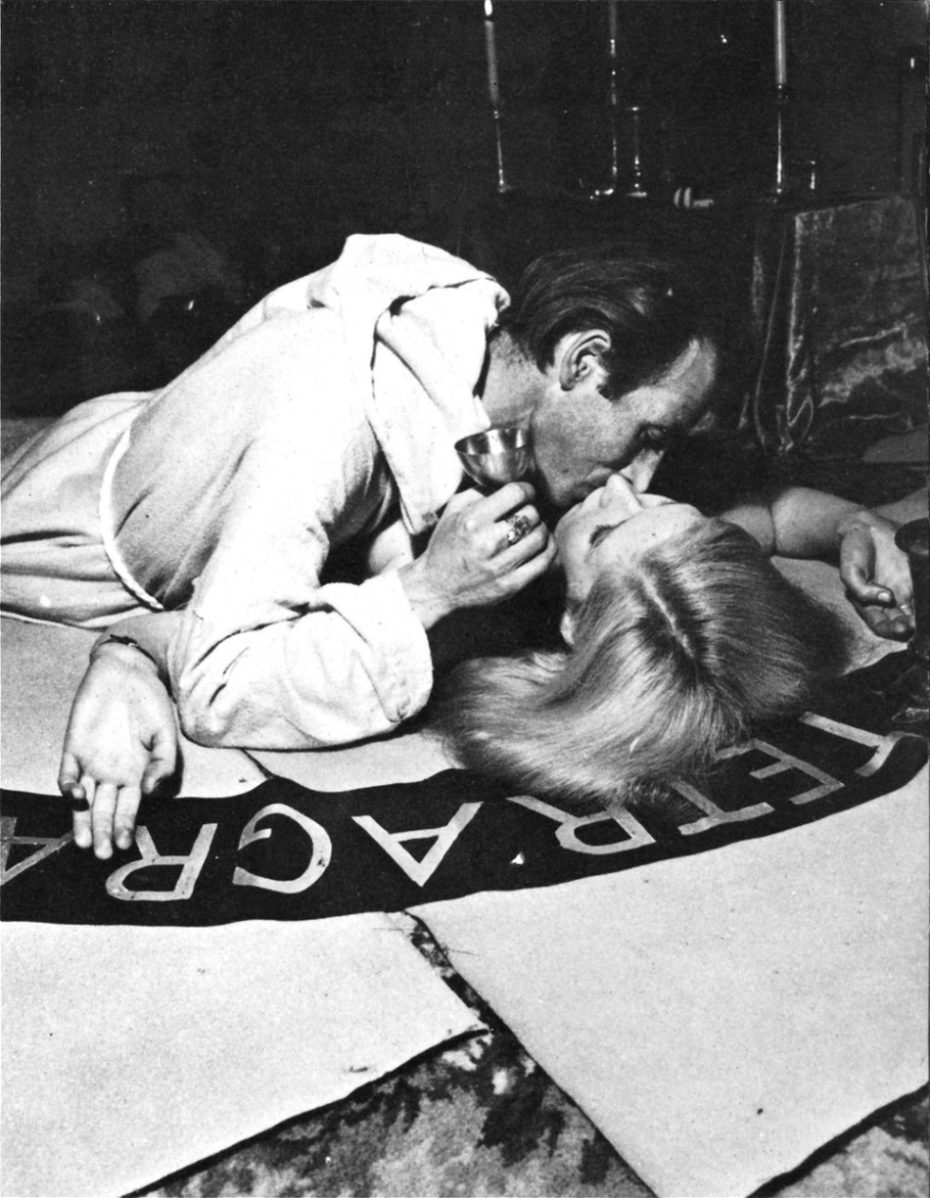
Ever since humans could stand on their own two feet and get back pain, pimples, broken hearts, and every human ailment in-between, we’ve had witches. We just called them medicine doctors, or wise men. Get rid of the spooky sparkly trappings, and you see what witchcraft’s really about: healing.
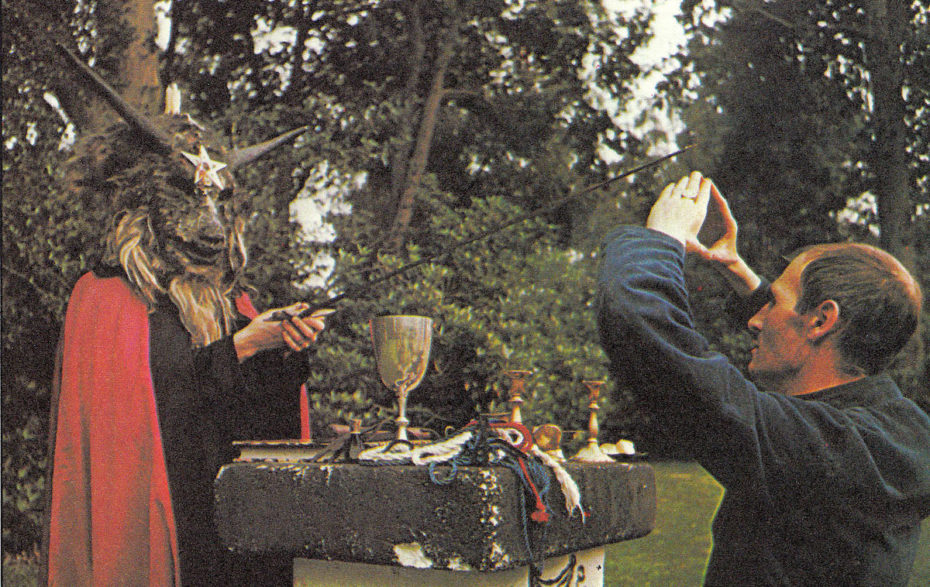
While no one culture or belief system has been the launching pad into today’s smorgasbord of magical faiths, a huge debt is owed to the African diaspora and ancient Western soothsayers. Fast forward to the late 19th and early 20th century (flying our broom right over those 17th century Salem Witch Trials), and you have people who’ve inherited the Victorian fascination with Spiritualism and esoteric pursuits, like occultist Aleister Crowley. New witch covens begin popping up in 1930s England, and by the 1960s and ’70s, witches are performing their bare naked rituals in front of the television cameras:
But these weren’t your nan’s witches. They were followers of “Wicca”, a 1950s faith founded by a man named Gerald Gardner that pulled heavily from Paganism while developing its own witchy philosophy….
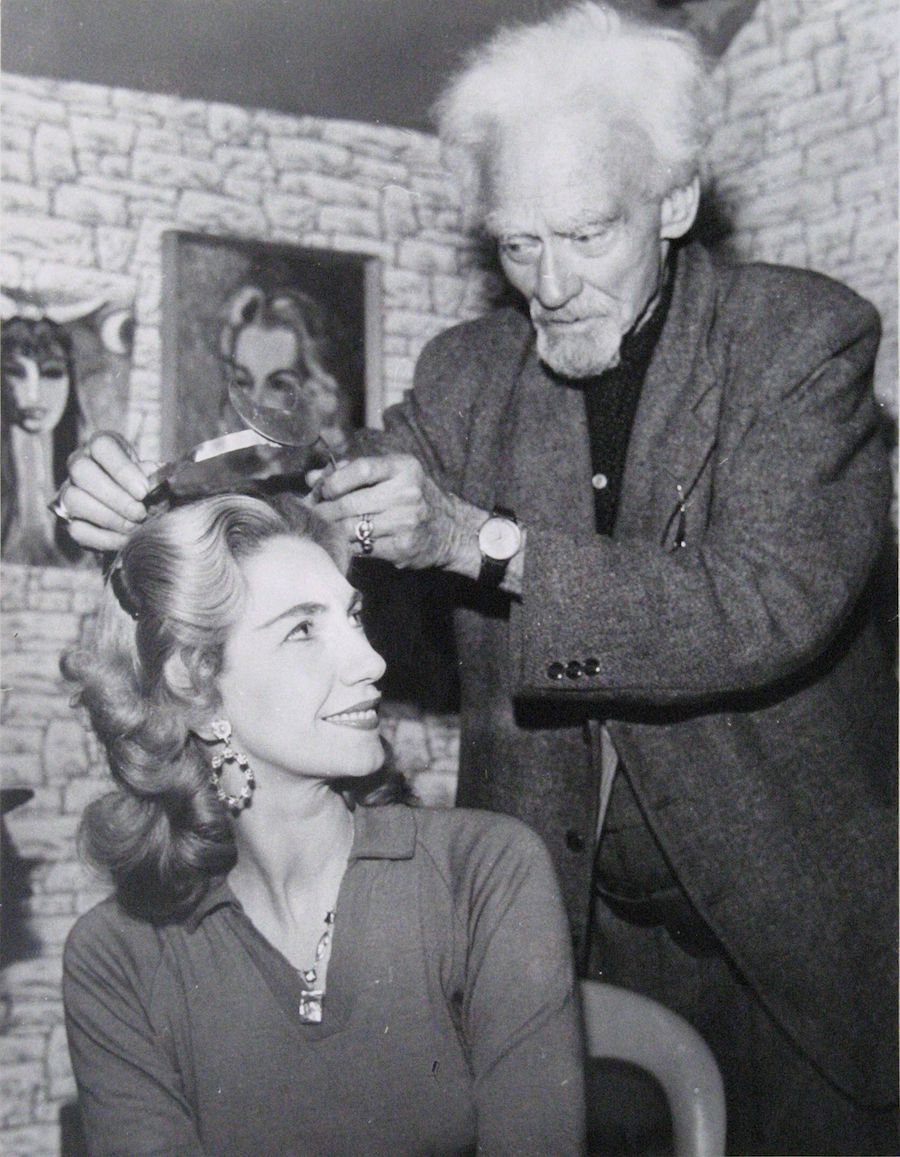
Wiccans worshipped a horned god of the forest, and a goddess of the moon; they considered the pentagram’s five points as symbols of air, water, fire, earth and spirit. They did’t so much as believe in the supernatural, as they did the power inherent in the natural world, which often include pseudosciences. Hence, astrology, crystals, energy fields, and the like making their way into the craft. The robes, the talismans, the diadems – they were manifestations of those beliefs…
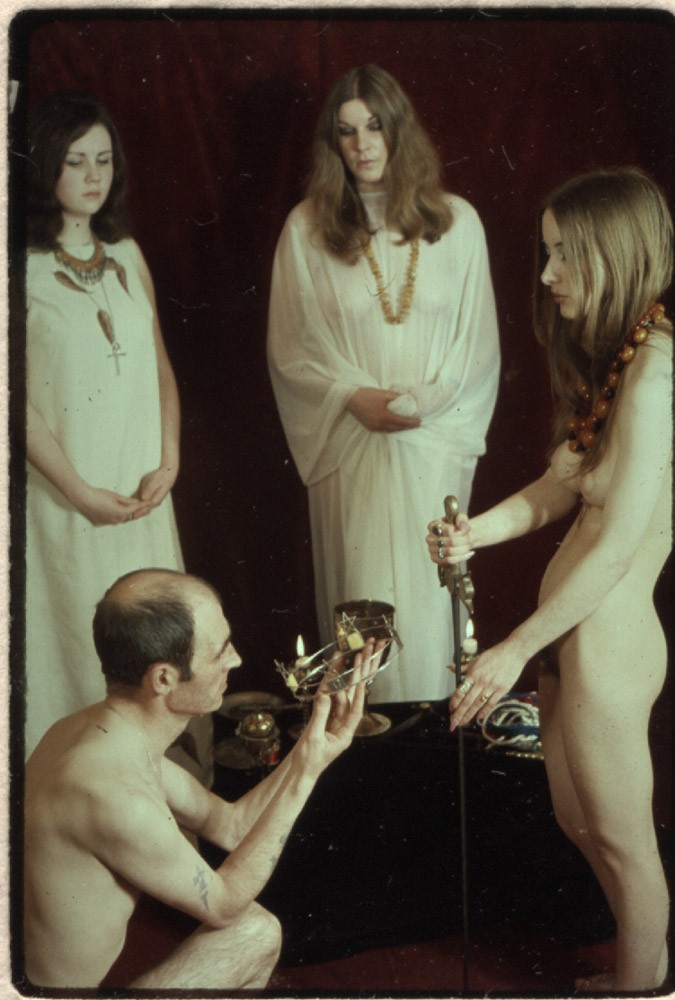
So while not all Pagans are Wiccans, all Wiccans are Pagans. And while not all Wiccans identify as witches, many do. The label “provides a framework,” writes religious studies scholar Joanne Pearson in Belief Beyond Boundaries: Wicca, Celtic Spirituality and the New Age. Moreover, and this “identification with witch[es] during the time of persecutions is part of the reclamation of female power.”
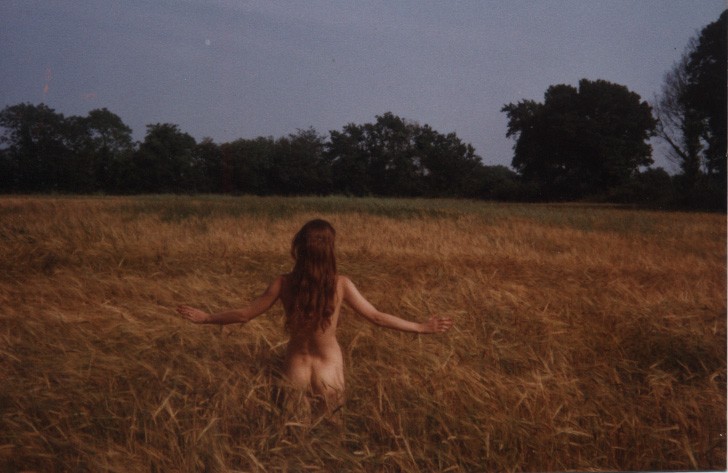
Given Wicca’s veneration of the sacred masculine and feminine dynamic, many of its notable figures were indeed power couples, from Janet and Stewart Farrar to Patricia and Arnold Crowther, or Maxine and Alex Sanders.
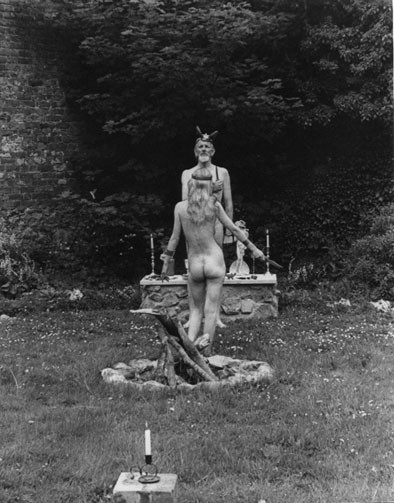
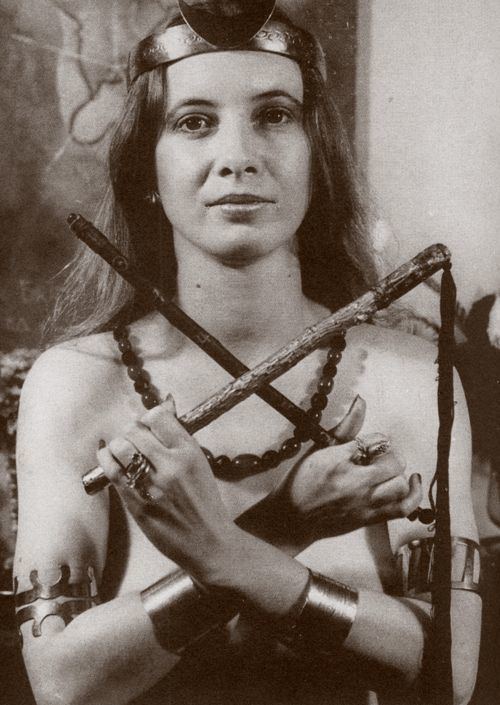
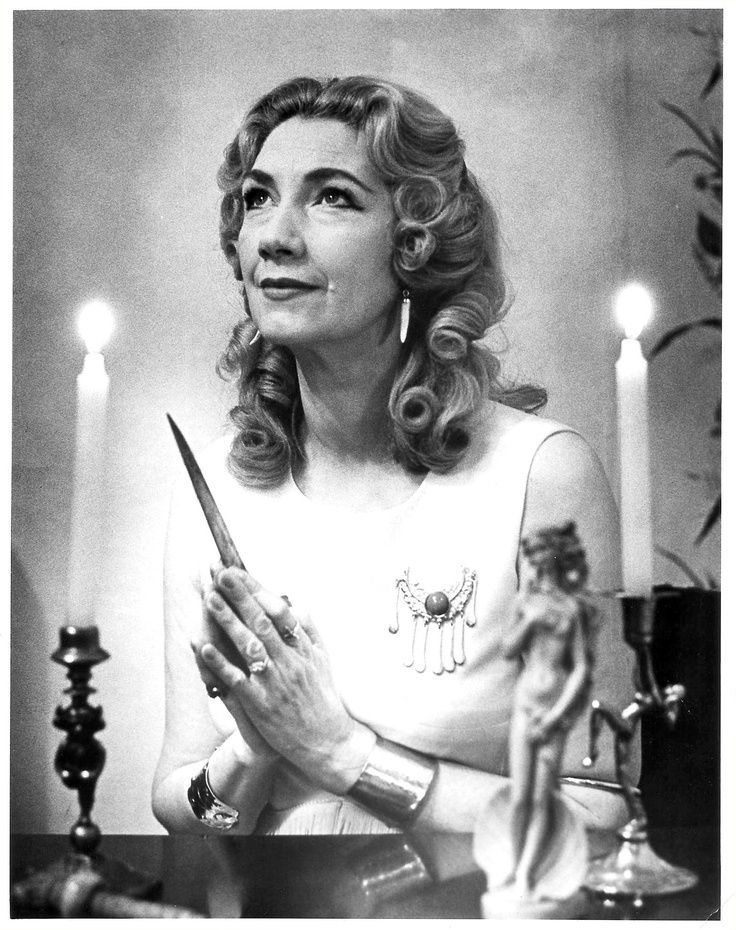
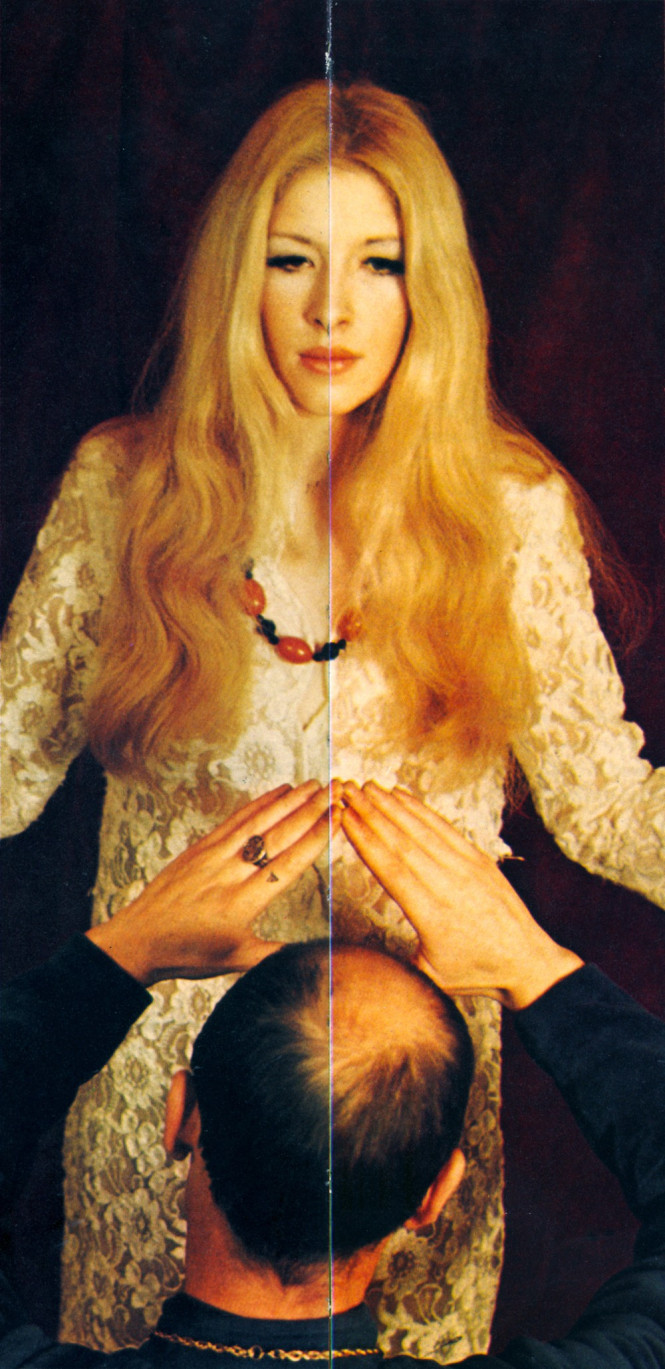
Sartorially, Maxine Sanders has a particularly special place in our hearts. With her cascading, platinum locks and talent for pulling off white lace gowns, Sanders looked like she was born on a moonbeam. In actuality, she’s a gal from Cheshire who helped co-found another 1960s off-shoot of Wicca, “Alexandrian Wicca” (named after the library of Alexandria) with her late husband, Alex Sanders. Together, they did something witchcraft community had seldom done before: step consistently into the public eye. Legend of the Witches (1970), Witchcraft ’70 (1970), and Secret Rites (1971) were a few of the documentaries in which they were featured. It was a bold, brave move for a woman who has literally been stoned by haters in her former hometowns.
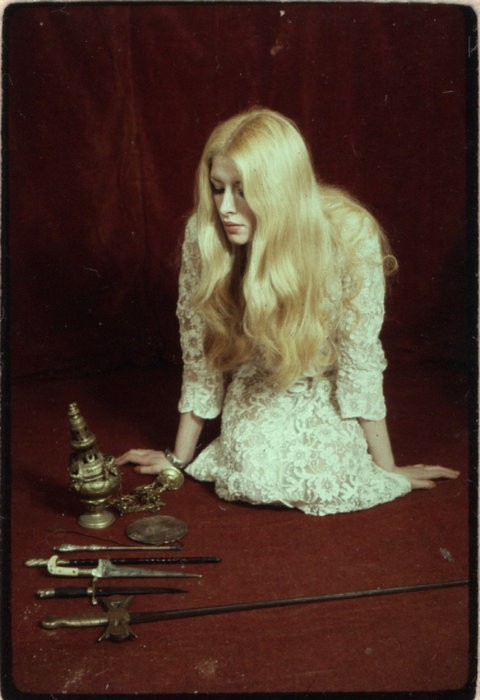
Thus, the women of Wicca and its many off-shoots became forces of nature, carving out an empowering space for women in modern spirituality. There was “Gardenian” High Witch Priestess Doreen Valiente, who wrote some of the faith’s most important founding texts. There’s a wonderful bit in a documentary on witchcraft in 1979, in which she says, “I’d say to a person who really wanted to know what the spirit of witchcraft, that they’ll learn more by, say, going out on the [hills] at midnight and listening to the wind in the trees and looking at the full moon…”
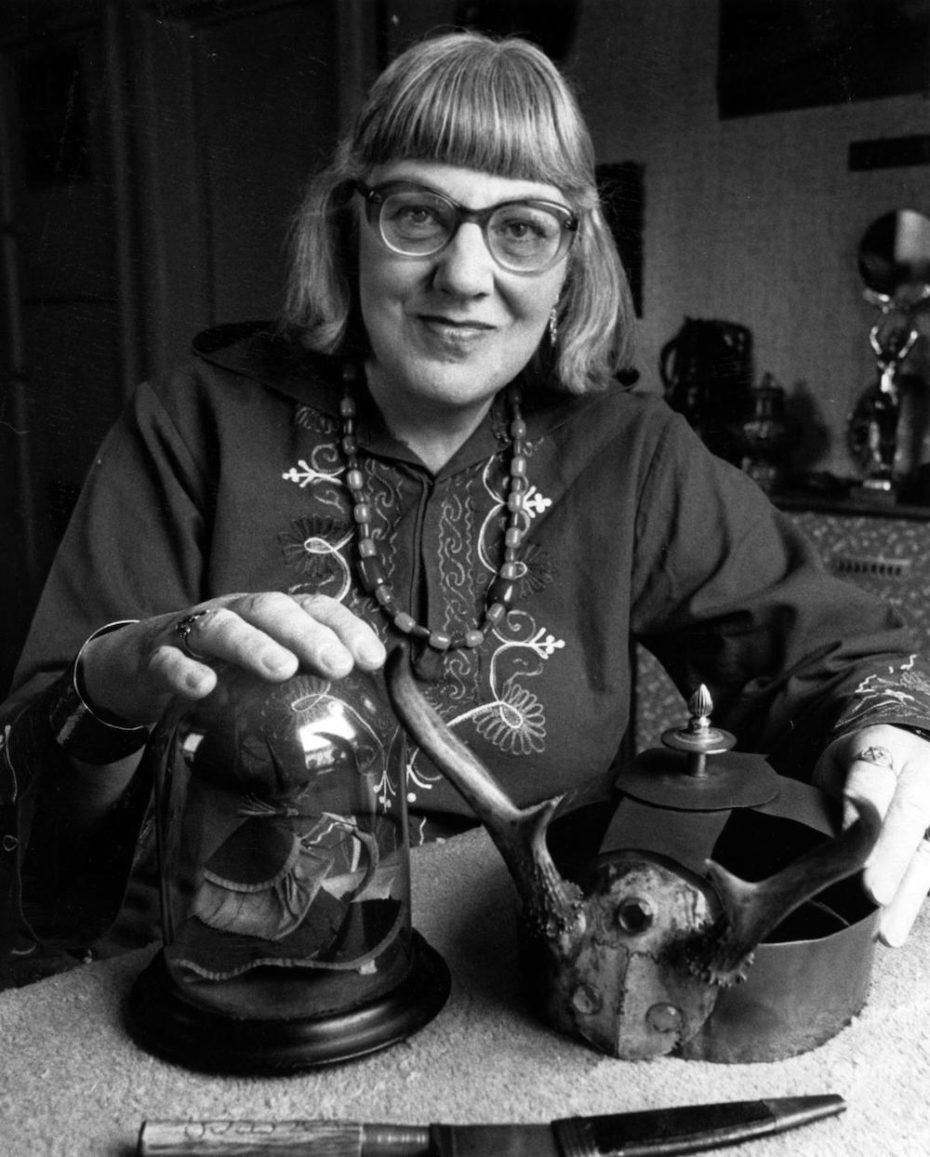
In 1964, one lucky LIFE magazine journalist did just that. Terrence Spencer followed Eleanor Bone, leader of a prominent London coven, into a ritual around sacred prehistoric stones…
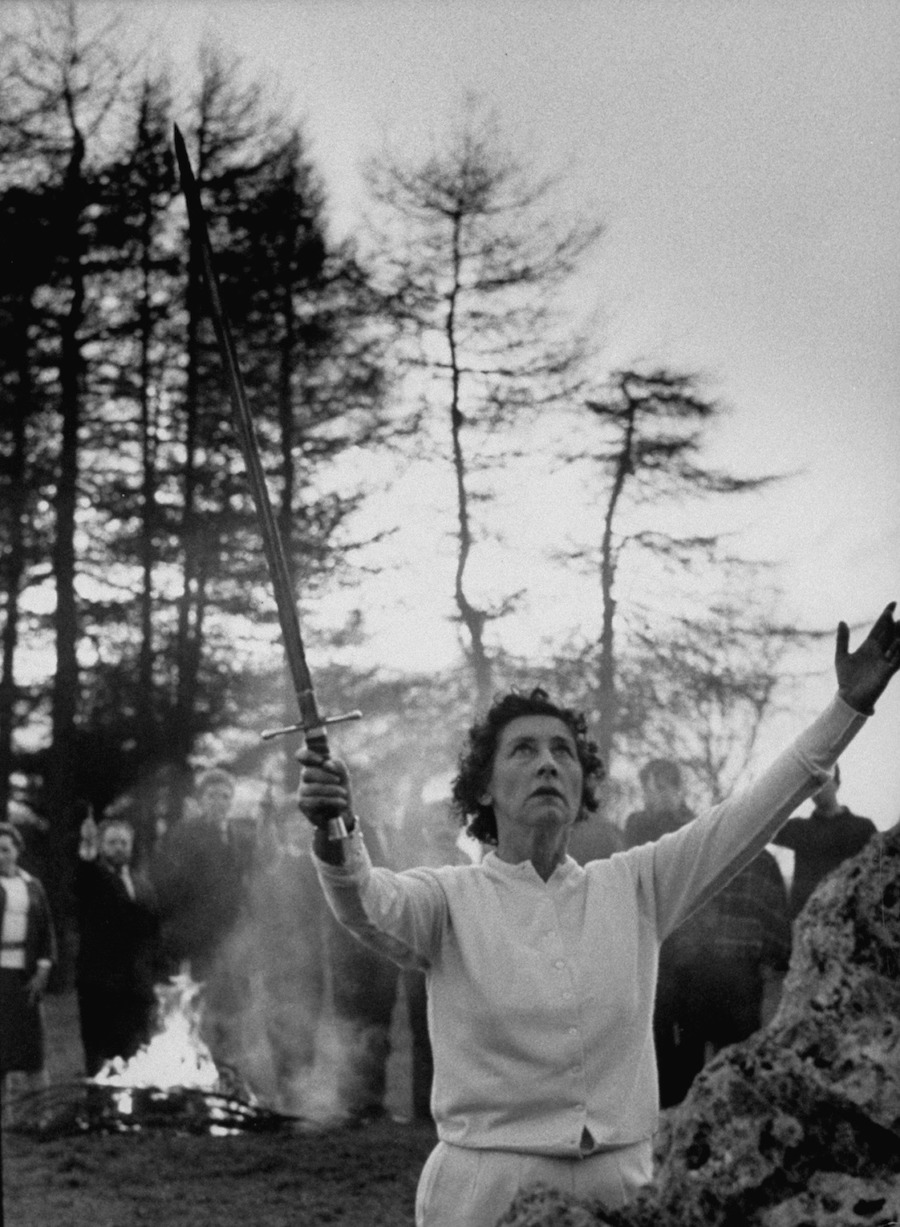
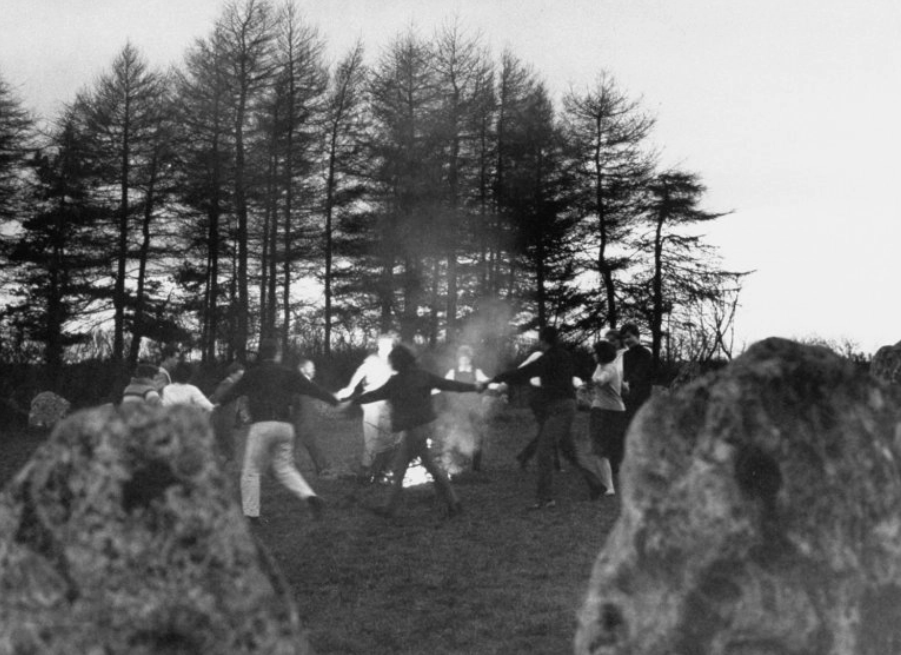
“At climax of dance they leap over fire to stimulate the sun as the source of life,” wrote Spencer.
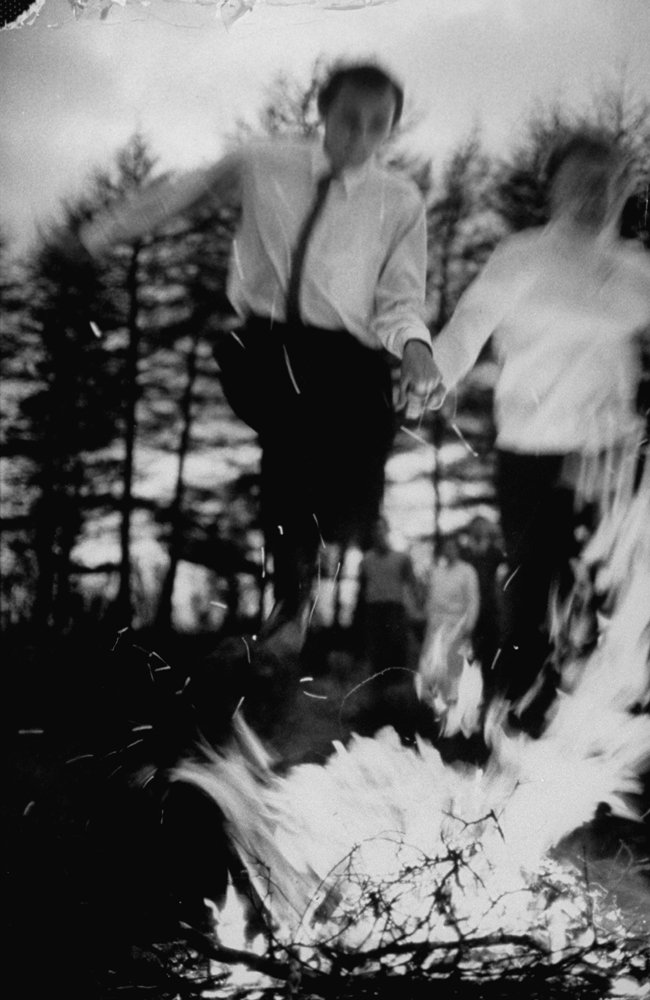
He even got up close and personal in the coven cottage…
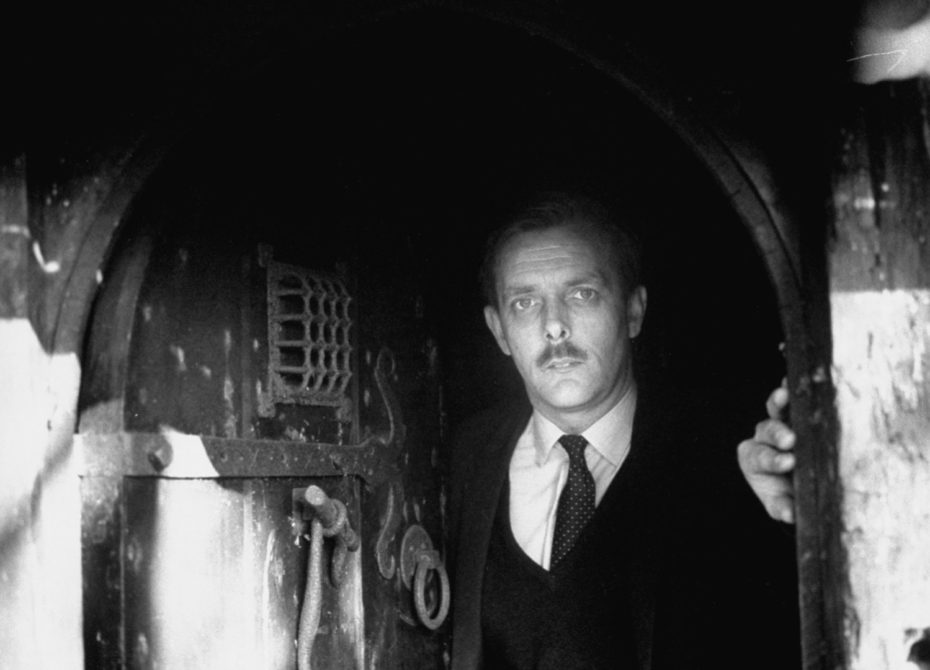
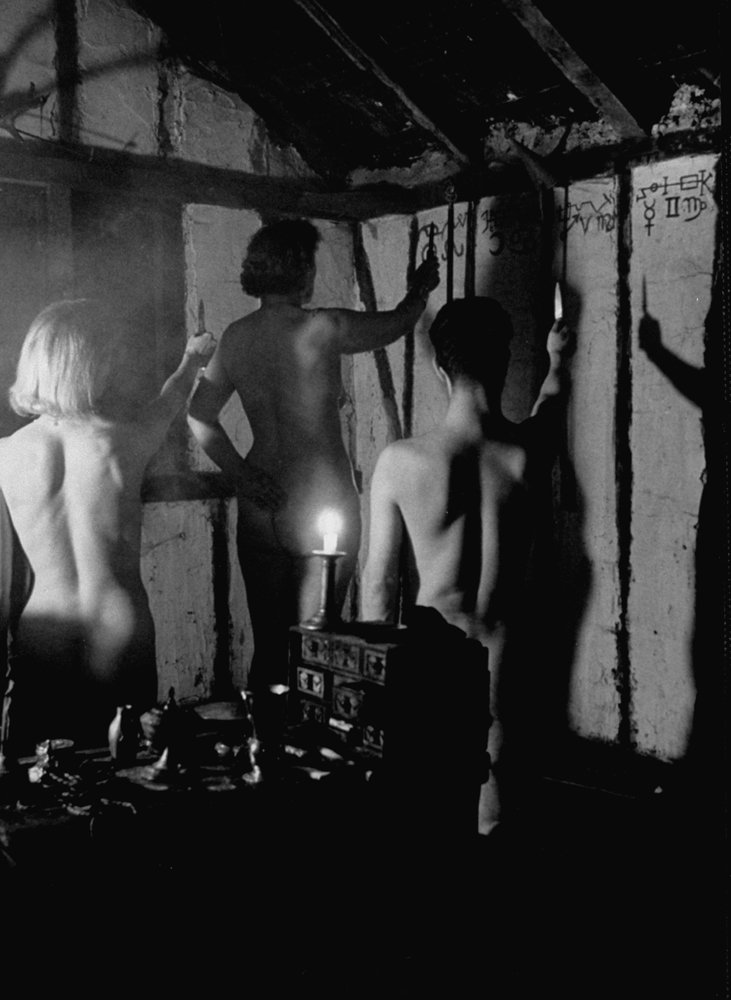
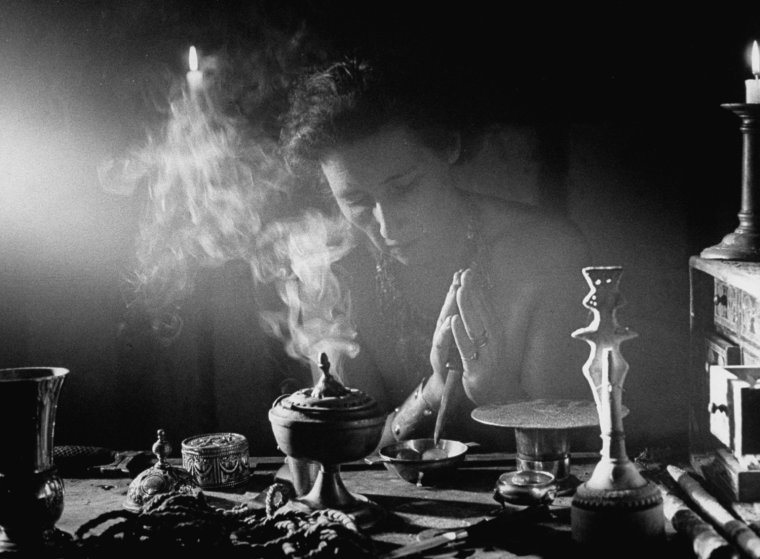
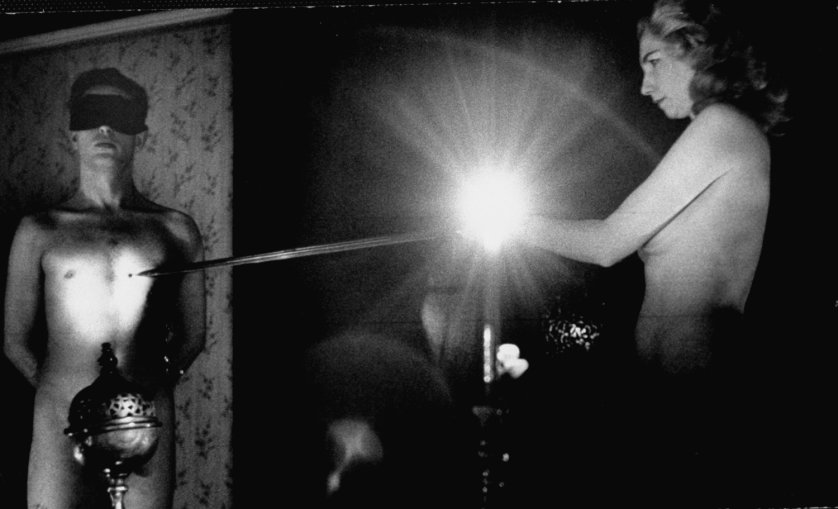
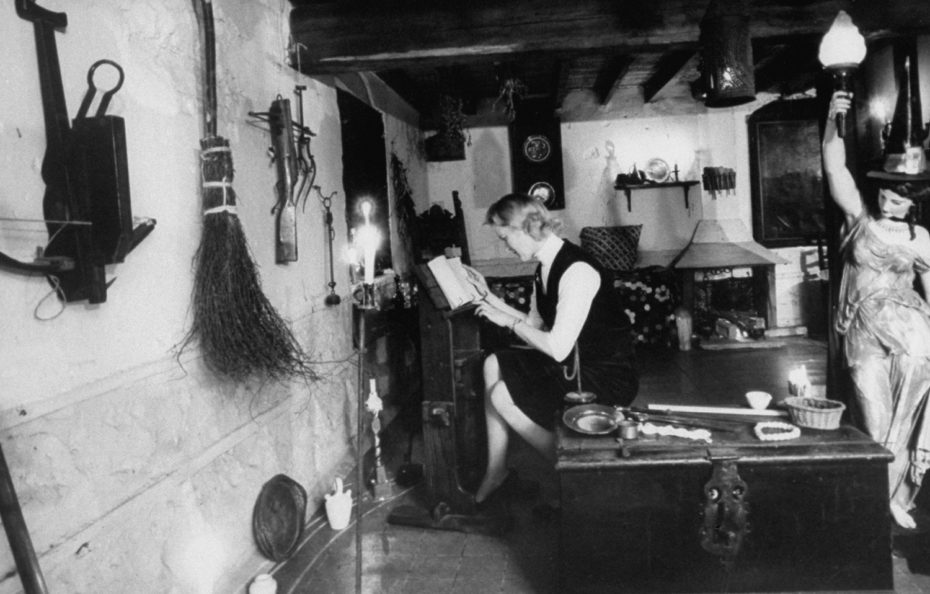
Which of course begs the question: how do you find a coven? It’s not as easy to find out as you’d think in this digital age; many still keep their practices on the down low and in the highest of confidences. Witches are still misunderstood, persecuted, and stigmatised. However, we know that as of 2006, the cottage of the legendary 1930s “Bricket Wood Coven”, which included both Gerald Gardner and Doreen Valiente, sleeps quietly in the English woods with its secrets…
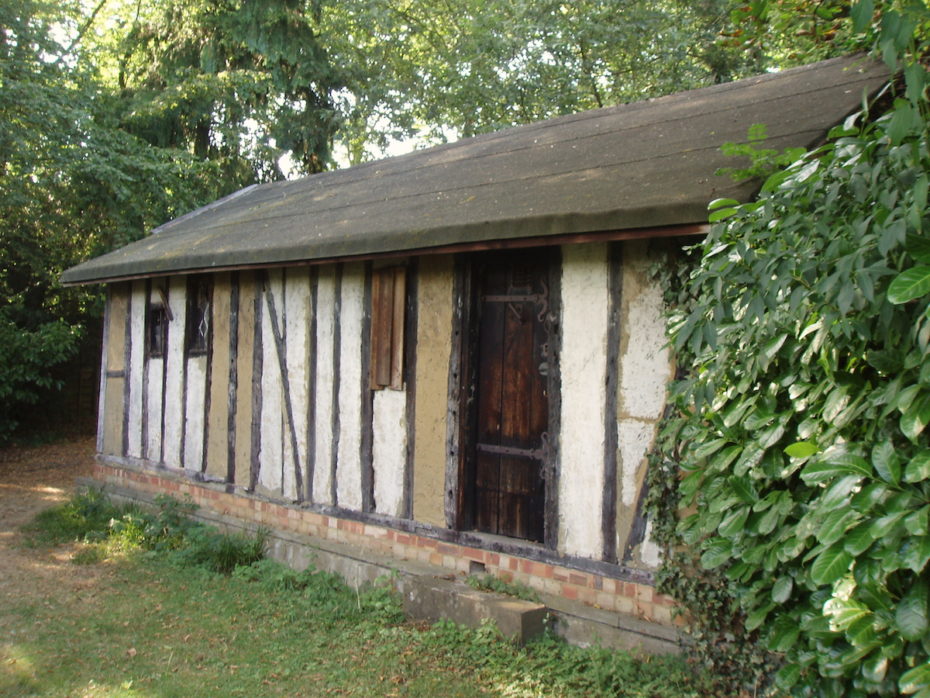
While it wasn’t a coven HQ, Gardner was also the resident witch and director at the Museum of Witchcraft and Magic. At the time, the Museum’s magical archives – bar none in the world – were on the Isle of Man, in an old mill that was already known locally as “the Witches’ Mill”. He even set up a little restaurant, “The Witches’ Kitchen.” Sadly, the museum was driven out of town by the church.
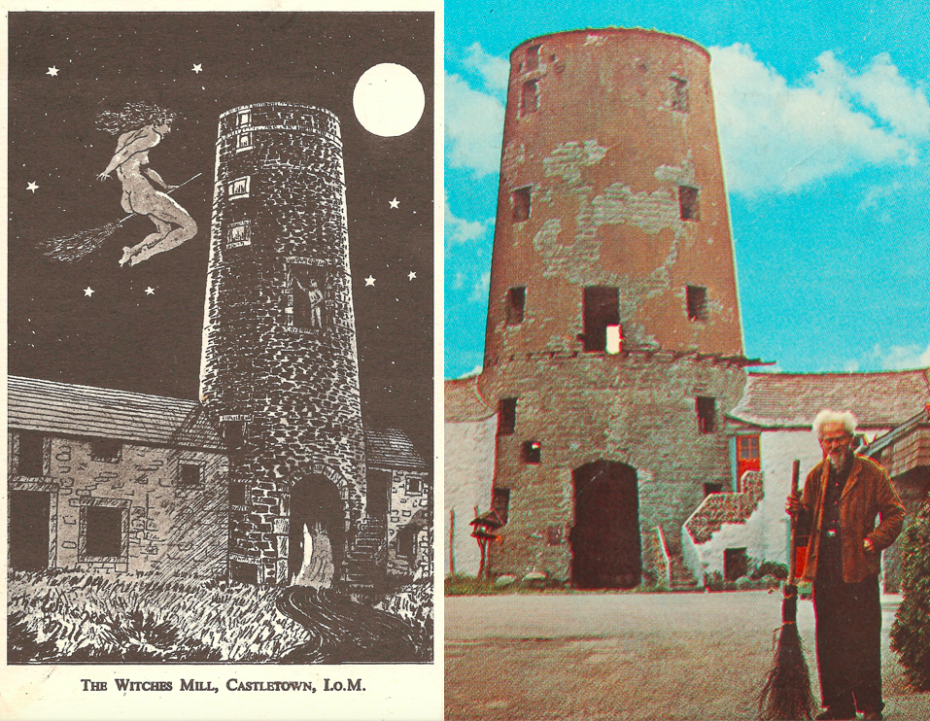
But a thousand year stigma isn’t so easily effaced. As much as Wicca’s pastoral image paired well with the peace and love movements of the 1960s, the media happily entangled it with lies of blood sacrifices, or Anton LaVey’s new Church of Satan, which was itself misunderstood as “Evil.”
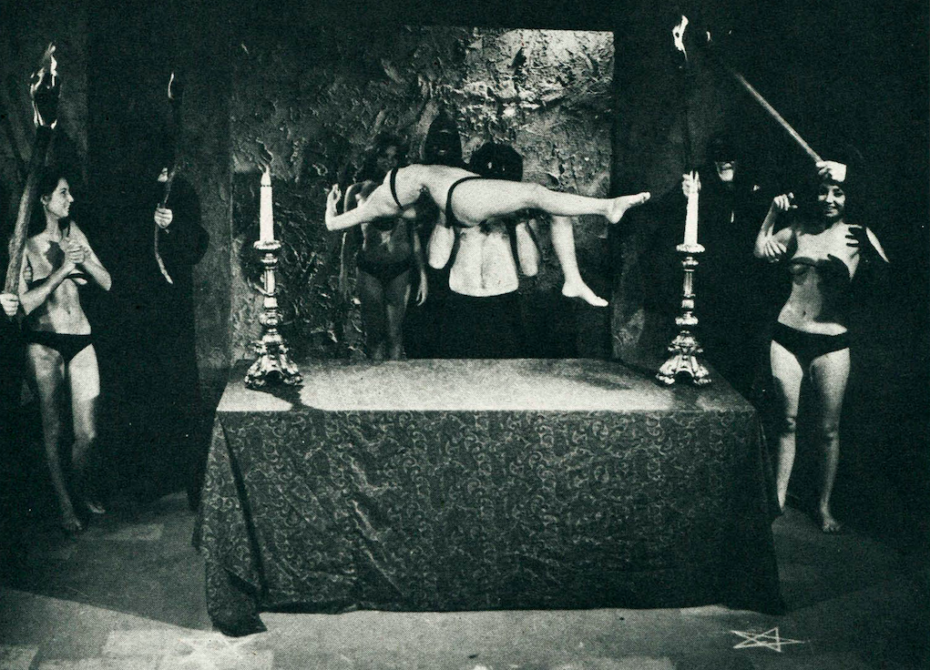
Occultists and gurus were popping up across the country, but especially on the West coast. “Cult after cult bubbles forth from California’s cauldrons,” said one paper in the 1970s, “[humans] need something to overcome their troubles and Black Magic leads the way.” The seemingly ritualistic Manson murders of 1969 didn’t help, either.
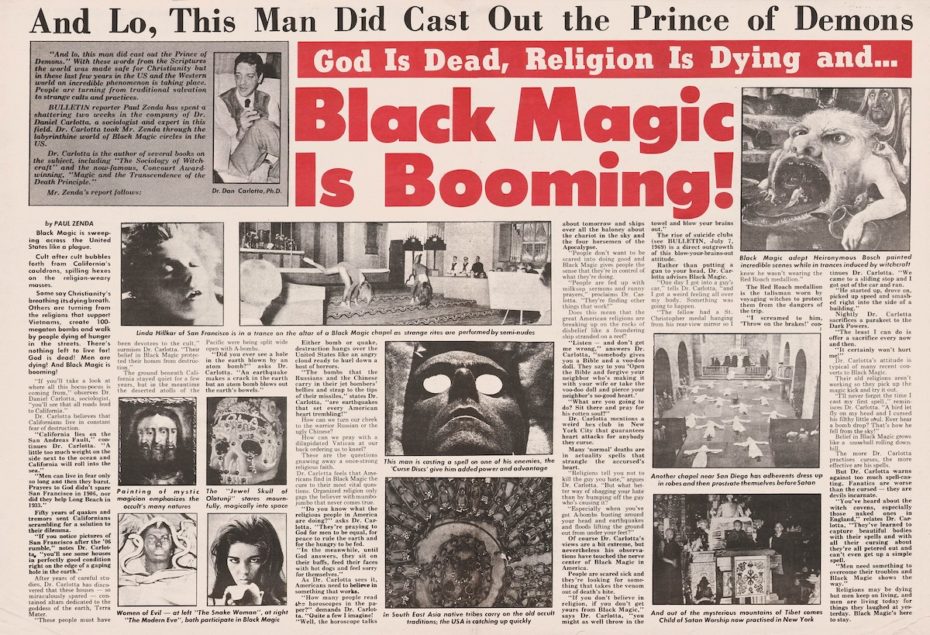
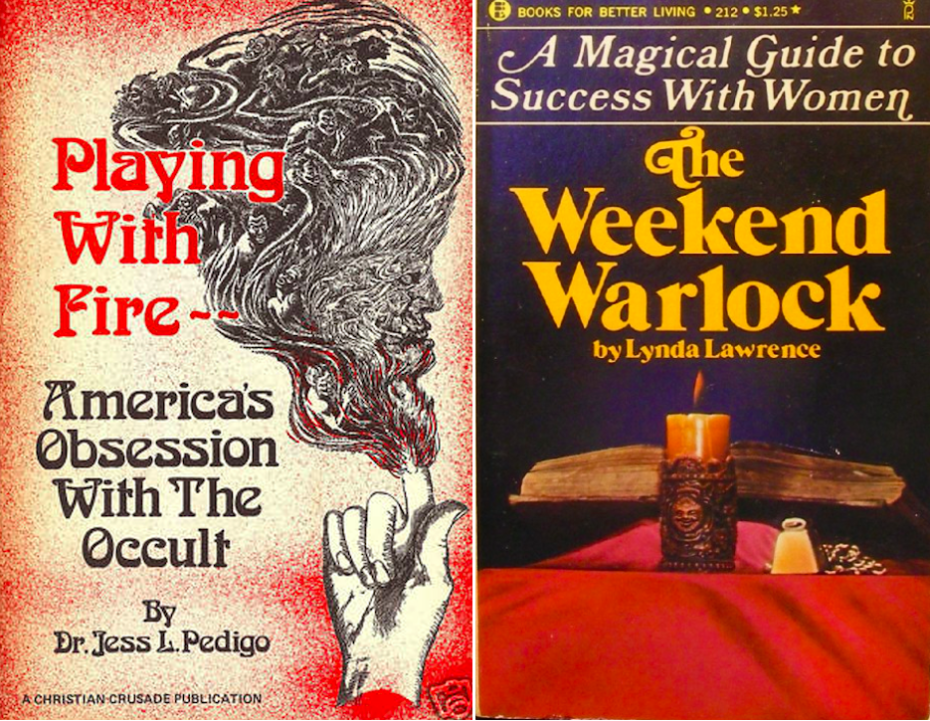
Santa Monica High School even has a “Occult Club” on premises in 1973, as evidenced through this yearbook excerpt:
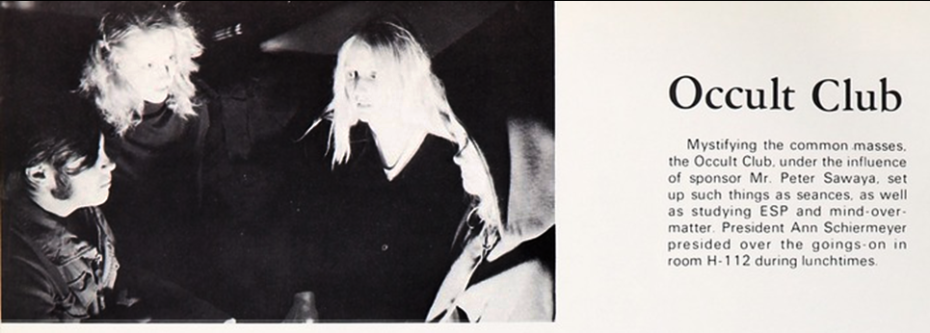
For a while there, particularly with the “Satanic Panic” of the 1980s and ’90s, witchcraft in danger of was drifting back into its persecuted pigeonhole. But a new generation of witches has stepped in to speak for its values and truths. Witches and magical practitioners of colour are creating a digital network to celebrate the likes of Santeria and Voodoo; New Orleans’ based Hoodoo, Candomblé, and everything in-between. Consider Bri Luna, aka “The Hoodwitch”; the Los Angeles native is an astrologer, witch, and healer whose services (and very cool online store) are making the community more inclusive than ever.
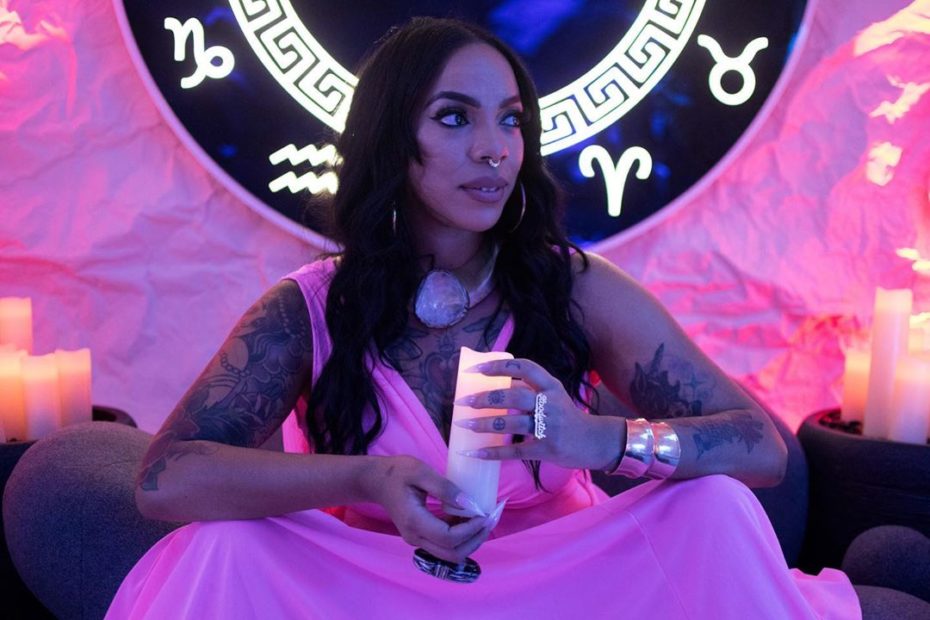
Now that’s magic at its best.


